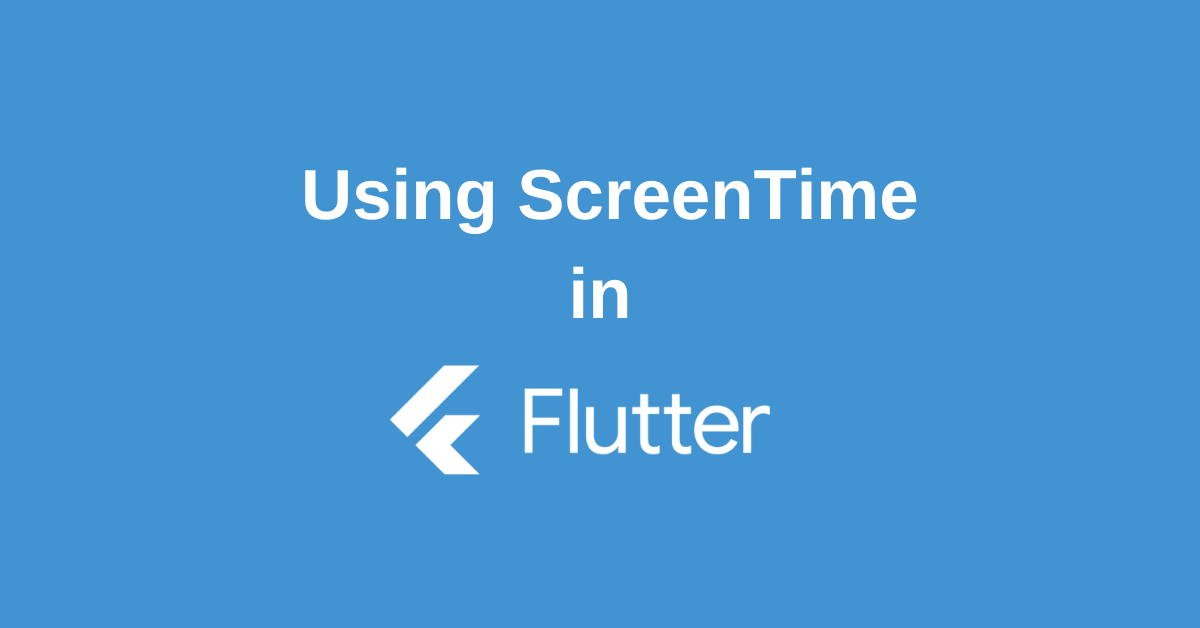In the fast-evolving world of mobile app development, understanding user behavior and app usage is crucial for building engaging and responsible applications. With increasing concerns about digital wellbeing, developers are keen on integrating features that monitor and manage screen time. Flutter, Google’s versatile UI toolkit, offers powerful capabilities to build cross-platform apps efficiently. This guide dives deep into the Flutter Screen Time API, explaining what it is, how to use it, and providing practical examples and resources to help developers implement screen time tracking in their apps seamlessly.
The Flutter Screen Time API is an integration that allows Flutter applications to access device screen time data, primarily through native APIs on iOS and Android platforms. It enables developers to monitor app usage, set restrictions, and encourage healthier device habits among users. On iOS, this API leverages Apple’s Screen Time framework, while Android provides similar functionality through overlay or usage stats permissions.
Using this API, developers can create apps that provide detailed insights into how much time is spent on various applications, implement parental controls, or build productivity tools that help users focus better.
Flutter Screen Time API Tutorial: Getting Started
For developers who want to get hands-on, a practical Flutter Screen Time API tutorial highlights how to start integrating such functionality into a Flutter app.
- iOS Integration: Since iOS’s Screen Time API is native to Swift/Objective-C, Flutter facilitates this by using platform channels. A method channel connects Flutter’s Dart code with native Swift code to query or manage screen time data.
- Android Integration: Android apps can access usage data or implement overlays that provide similar screen time tracking features.
A common tutorial approach includes:
- Setting up the platform channel in Flutter.
- Writing native iOS Swift code to interact with the Screen Time API.
- Invoking these native functions from Flutter as needed.
- Parsing and displaying usage data inside Flutter widgets.
This method ensures that Flutter apps can harness native screen time functionalities while maintaining cross-platform UI consistency.
Flutter Screen Time API Example
To concretize the concept, consider an example use case where an app retrieves total screen time spent on specific applications over a day and displays it within the Flutter UI.
// Example Flutter method to call native code
Future<int> getScreenTime() async {
const platform = MethodChannel('com.example.screentime');
final int screenTime = await platform.invokeMethod('getScreenTime');
return screenTime;
}
// In Flutter widget
@override
Widget build(BuildContext context) {
return FutureBuilder<int>(
future: getScreenTime(),
builder: (context, snapshot) {
if (snapshot.connectionState == ConnectionState.done) {
return Text('Today\'s screen time: ${snapshot.data} minutes');
} else {
return CircularProgressIndicator();
}
},
);
}
This basic example illustrates how Flutter can communicate with native APIs and present screen time data. More complex examples may track usage by category, app, or allow time restriction settings.
Flutter Screen Time API GitHub Resources
Several open-source projects serve as excellent references or starting points for developers:
- The popular repository ioridev/flutter_screentime demonstrates how to use Apple’s Screen Time API via Flutter with native Swift bridging. It supports setting restrictions and monitoring activities on iOS, alongside an Android overlay-based solution.
- Other community plugins exist on pub.dev, offering real-time monitoring of app usage, especially focused on Android devices.
These GitHub resources provide implementations, code snippets, and ideas to accelerate Flutter screen time functionalities development, promoting knowledge sharing and collaborative enhancement.
Benefits of Using Flutter Screen Time API
Integrating screen time monitoring in Flutter apps offers multiple advantages:
- User Empowerment: Provides feedback on usage patterns enabling users to take control of their digital habits.
- Parental Controls: Developers can build features to help parents restrict or monitor children’s app usage.
- Enhanced Productivity: Apps can track focus or break times, improving work and study routines.
- Cross-Platform: Flutter’s single codebase approach combined with platform-specific native integrations ensures consistent user experience across devices.
Conclusion
Flutter developers looking to incorporate screen time tracking and management features now have the tools and community support available to build robust and user-centric applications. By leveraging the Flutter Screen Time API via platform channels and native integrations, powerful digital wellbeing features can be brought to life. Whether for parental control, productivity apps, or usage analytics, the Flutter ecosystem is evolving to meet modern app demands.
For comprehensive learning, follow detailed Flutter screen time API tutorials and explore open-source projects on Flutter screen time API GitHub repositories. Examples provided lay the groundwork for practical implementation, enabling developers to create innovative Flutter apps that contribute positively to users’ device habits and focus.
Wanna Level up Your Flutter game? Then check out our ebook The Complete Guide to Flutter Developement where we teach you how to build production grade cross platform apps from scratch.Do check it out to completely Master Flutter framework from basic to advanced level.

